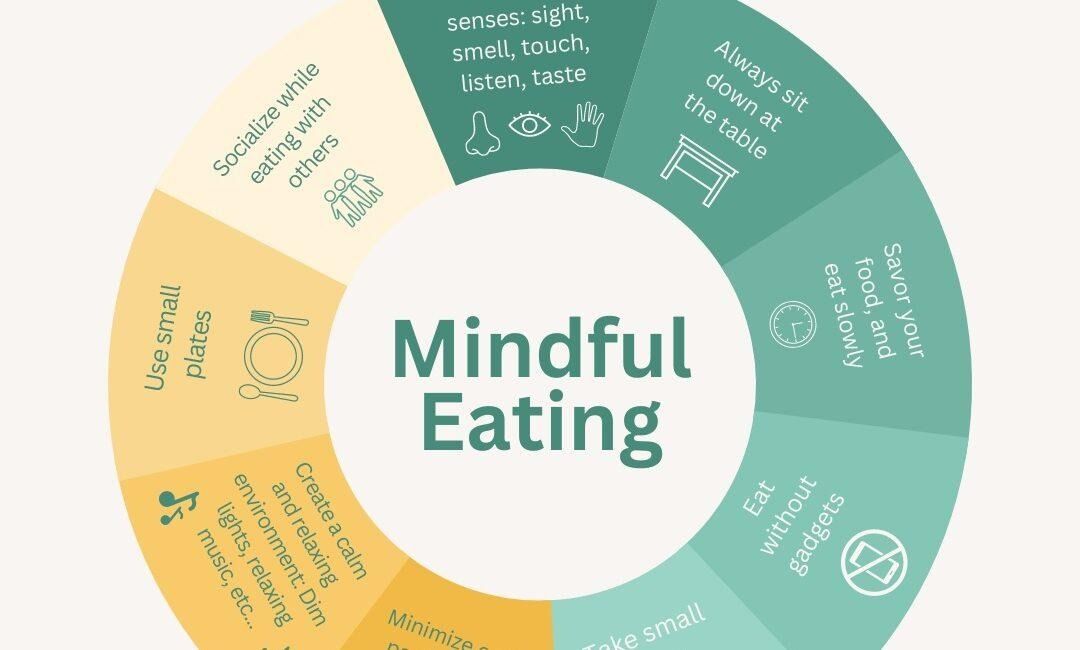

Mindful eating is a powerful practice that can transform your relationship with food and improve your overall health. Let’s learn more about this topic below with Eggy Car, as we explore the benefits and techniques of mindful eating for better well-being.
Mindful eating is an approach to food consumption that focuses on being fully present and aware during the eating experience. It involves paying attention to the sensory aspects of food, such as taste, texture, and aroma, as well as being conscious of your body’s hunger and fullness cues. This practice encourages a deeper connection with the food you eat and promotes a more balanced and satisfying relationship with nourishment.
The concept of mindful eating has roots in mindfulness meditation practices, which emphasize non-judgmental awareness of the present moment. When applied to eating, this mindfulness can help reduce stress, improve digestion, and foster a healthier attitude towards food. By slowing down and savoring each bite, you can cultivate a greater appreciation for the nourishment your body receives and make more intentional choices about what and how much you eat.
Mindful eating is not about strict diets or deprivation; rather, it’s about developing a more intuitive and balanced approach to nutrition. This practice can be particularly beneficial for those struggling with emotional eating, overeating, or disordered eating patterns. By bringing awareness to the act of eating, you can begin to identify and address underlying emotional triggers and develop a more positive relationship with food.
Incorporating mindful eating into your daily routine can yield numerous benefits for both physical and mental health. One of the primary advantages is improved digestion. When you eat mindfully, you tend to chew your food more thoroughly and eat at a slower pace, which can aid in better digestion and nutrient absorption. This can lead to reduced bloating, gas, and other digestive discomforts.
Weight management is another significant benefit of mindful eating. By paying attention to your body’s hunger and fullness cues, you’re more likely to eat appropriate portions and avoid overeating. This can naturally lead to weight loss or maintenance without the need for restrictive diets. Mindful eating also helps you distinguish between physical hunger and emotional eating, allowing you to address emotional needs in more constructive ways.
Practicing mindful eating can also have positive effects on your mental health. It can reduce stress and anxiety related to food and eating, as you learn to approach meals with a sense of calm and presence. This practice can also enhance your overall enjoyment of food, as you become more attuned to the flavors, textures, and aromas of what you’re eating. Many people find that mindful eating leads to a greater appreciation for the nourishing qualities of food and a more positive relationship with their bodies.
Furthermore, mindful eating can contribute to better blood sugar control. By eating more slowly and paying attention to portion sizes, you may be able to regulate your blood glucose levels more effectively. This can be particularly beneficial for individuals with diabetes or those at risk of developing the condition. Additionally, mindful eating can help reduce instances of emotional or stress-related eating, which often involves consuming high-sugar or high-fat foods that can negatively impact blood sugar levels.
Incorporating mindful eating into your daily life doesn’t require radical changes or special equipment. It’s about cultivating awareness and intention around your eating habits. One of the fundamental techniques is to eat without distractions. This means turning off the television, putting away your phone, and focusing solely on your meal. By giving your full attention to the act of eating, you can better tune into your body’s signals and truly savor your food.
Another important aspect of mindful eating is to eat slowly and chew thoroughly. Take the time to appreciate the flavors and textures of each bite. This not only enhances your enjoyment of the meal but also gives your body time to register fullness, reducing the likelihood of overeating. Try putting your utensils down between bites to naturally slow your pace and create pauses for reflection.
Engaging all your senses is a key component of mindful eating. Before you begin eating, take a moment to observe the visual appearance of your food. Notice the colors, shapes, and arrangement on your plate. As you eat, pay attention to the aromas, textures, and tastes. This multisensory approach can heighten your appreciation for the food and make the eating experience more satisfying.
Practicing gratitude is another powerful technique in mindful eating. Before your meal, take a moment to express gratitude for the food in front of you. Consider the journey the food has taken to reach your plate, from the farmers who grew it to the people who prepared it. This practice can foster a deeper connection with your food and promote a sense of contentment and appreciation.
Mindful eating naturally lends itself to better portion control, but there are specific techniques you can use to enhance this aspect. One effective method is to use smaller plates and bowls. This simple change can help you naturally reduce portion sizes without feeling deprived. Additionally, try serving yourself slightly less than you think you want, knowing that you can always have more if you’re still hungry after finishing what’s on your plate.
Another technique is to pause midway through your meal to assess your hunger level. Take a moment to check in with your body and determine if you’re still hungry or if you’re approaching fullness. This practice can help you avoid eating past the point of satisfaction and learn to recognize your body’s subtle cues of fullness.
Mindful eating can be a powerful tool in addressing emotional eating patterns. When you feel the urge to eat outside of physical hunger, pause and take a few deep breaths. Ask yourself what you’re really feeling and if food is the most appropriate way to address that emotion. If you decide to eat, do so mindfully, paying attention to the experience and how it affects your emotional state.
Keeping a food journal can be helpful in identifying emotional eating triggers. Note not just what you eat, but also how you feel before, during, and after eating. Over time, you may start to recognize patterns and can develop alternative strategies for coping with emotions that don’t involve food.
While it’s ideal to practice mindful eating at every meal, this may not always be practical in our busy lives. However, there are ways to incorporate elements of mindful eating into your daily routine, even when time is limited. One approach is to designate at least one meal a day as a mindful eating experience. This could be breakfast before starting your workday or dinner as a way to unwind and transition from work to personal time.
For other meals and snacks, you can still practice mini-mindfulness moments. Take a few deep breaths before eating, even if you’re at your desk or on the go. Pay attention to the first few bites of your food, noting the flavors and textures. These small acts of mindfulness can add up and help maintain a connection with your eating habits throughout the day.
Creating a supportive environment is crucial for successful mindful eating. This might involve setting up a dedicated eating space in your home, free from distractions like televisions or computers. You could also involve family members or roommates in your mindful eating practice, making it a shared experience that encourages connection and conversation over meals.
Meal planning and preparation can also support mindful eating. By taking the time to plan and prepare your meals, you’re already investing thought and intention into your eating habits. This can make it easier to approach meals mindfully, as you’ve already considered what you’re going to eat and why. Additionally, cooking your own meals allows you to be more aware of the ingredients and processes involved in creating your food, further deepening your connection with what you eat.
Remember that mindful eating is a practice, and like any skill, it takes time and patience to develop. Be gentle with yourself as you incorporate these techniques into your life. It’s normal to have meals where you’re less mindful or times when you fall back into old habits. The key is to approach the practice with curiosity and non-judgment, always returning to mindfulness when you can.
As you continue to practice mindful eating, you may find that its benefits extend beyond mealtimes. The awareness and presence cultivated through mindful eating can spill over into other areas of your life, promoting overall mindfulness and well-being. You may become more attuned to your body’s needs in general, leading to better self-care practices and a more balanced lifestyle.